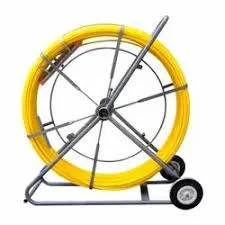
-
 Afrikaans
Afrikaans -
 Albanian
Albanian -
 Amharic
Amharic -
 Arabic
Arabic -
 Armenian
Armenian -
 Azerbaijani
Azerbaijani -
 Basque
Basque -
 Belarusian
Belarusian -
 Bengali
Bengali -
 Bosnian
Bosnian -
 Bulgarian
Bulgarian -
 Catalan
Catalan -
 Cebuano
Cebuano -
 Corsican
Corsican -
 Croatian
Croatian -
 Czech
Czech -
 Danish
Danish -
 Dutch
Dutch -
 English
English -
 Esperanto
Esperanto -
 Estonian
Estonian -
 Finnish
Finnish -
 French
French -
 Frisian
Frisian -
 Galician
Galician -
 Georgian
Georgian -
 German
German -
 Greek
Greek -
 Gujarati
Gujarati -
 Haitian Creole
Haitian Creole -
 hausa
hausa -
 hawaiian
hawaiian -
 Hebrew
Hebrew -
 Hindi
Hindi -
 Miao
Miao -
 Hungarian
Hungarian -
 Icelandic
Icelandic -
 igbo
igbo -
 Indonesian
Indonesian -
 irish
irish -
 Italian
Italian -
 Japanese
Japanese -
 Javanese
Javanese -
 Kannada
Kannada -
 kazakh
kazakh -
 Khmer
Khmer -
 Rwandese
Rwandese -
 Korean
Korean -
 Kurdish
Kurdish -
 Kyrgyz
Kyrgyz -
 Lao
Lao -
 Latin
Latin -
 Latvian
Latvian -
 Lithuanian
Lithuanian -
 Luxembourgish
Luxembourgish -
 Macedonian
Macedonian -
 Malgashi
Malgashi -
 Malay
Malay -
 Malayalam
Malayalam -
 Maltese
Maltese -
 Maori
Maori -
 Marathi
Marathi -
 Mongolian
Mongolian -
 Myanmar
Myanmar -
 Nepali
Nepali -
 Norwegian
Norwegian -
 Norwegian
Norwegian -
 Occitan
Occitan -
 Pashto
Pashto -
 Persian
Persian -
 Polish
Polish -
 Portuguese
Portuguese -
 Punjabi
Punjabi -
 Romanian
Romanian -
 Russian
Russian -
 Samoan
Samoan -
 Scottish Gaelic
Scottish Gaelic -
 Serbian
Serbian -
 Sesotho
Sesotho -
 Shona
Shona -
 Sindhi
Sindhi -
 Sinhala
Sinhala -
 Slovak
Slovak -
 Slovenian
Slovenian -
 Somali
Somali -
 Spanish
Spanish -
 Sundanese
Sundanese -
 Swahili
Swahili -
 Swedish
Swedish -
 Tagalog
Tagalog -
 Tajik
Tajik -
 Tamil
Tamil -
 Tatar
Tatar -
 Telugu
Telugu -
 Thai
Thai -
 Turkish
Turkish -
 Turkmen
Turkmen -
 Ukrainian
Ukrainian -
 Urdu
Urdu -
 Uighur
Uighur -
 Uzbek
Uzbek -
 Vietnamese
Vietnamese -
 Welsh
Welsh -
 Bantu
Bantu -
 Yiddish
Yiddish -
 Yoruba
Yoruba -
 Zulu
Zulu


Sep . 24, 2024 06:28 Back to list
Guide to Safe and Efficient Use of Manual Hoists in Various Applications
Understanding Manual Hoists A Comprehensive Overview
Manual hoists are essential tools in various industries, offering a reliable means of lifting heavy loads where mechanical power isn’t available or practical. These devices, often referred to as block and tackle systems, leverage human strength to facilitate lifting tasks, making them invaluable in settings such as construction sites, warehouses, and industrial facilities.
A manual hoist typically consists of a hook, rope or chain, and a mechanism that allows for the lifting of objects. The design may vary, but the fundamental principle remains the same using a simple mechanical advantage to make lifting manageable for one or two operators. Common types of manual hoists include chain hoists, wire rope hoists, and lever hoists, each suited for specific applications and load requirements.
One of the key advantages of manual hoists is their straightforward operation. Since these hoists do not require electricity or complex machinery, they can be used in locations where power supply is limited or where safety regulations prohibit electrical equipment. This makes them particularly beneficial in environments such as construction sites or outdoor settings.
Manual hoists are also known for their versatility. They can be easily adapted to different situations by adjusting the rope or chain length, and many models allow for horizontal lifting as well as vertical. This adaptability allows operators to use them for various tasks, from lifting heavy materials and equipment to positioning and moving items in tight spaces.
manual hoist

When using a manual hoist, safety is paramount
. Operators must ensure they are using the correct hoist for their specific load requirements and follow manufacturer guidelines for weight limits and operation. Proper training in the use of manual hoists is crucial, as improper use can lead to accidents and injuries. Wearing appropriate personal protective equipment (PPE), such as hard hats and steel-toed boots, is also recommended to safeguard against potential hazards.Maintenance of manual hoists is essential for uninterrupted operation and longevity. Regular inspections should be conducted to check for signs of wear and tear, such as frayed ropes or chains and damaged hooks. Lubricating moving parts and ensuring that all mechanisms operate smoothly can prevent breakdowns and extend the life of the hoist.
In terms of cost, manual hoists are generally more economical than their powered counterparts, making them an attractive option for small businesses or projects with budget constraints. However, it is essential to balance cost considerations with capability and safety to ensure that the chosen equipment meets the demands of specific tasks without compromising safety or efficiency.
In conclusion, manual hoists are invaluable tools across various industries, combining simplicity, cost-effectiveness, and versatility. Understanding their features, proper usage, and maintenance is crucial for anyone considering their use. By adhering to safety protocols and ensuring proper training, operators can effectively leverage manual hoists to enhance productivity while minimizing risks associated with lifting heavy loads. As industries continue to evolve, the role of manual hoists remains pertinent, proving that sometimes, the simplest solutions are the most effective.
Latest news
What Are Construction Tools and How Are They Used?
NewsJul.11,2025
Professional-Grade Duct Rodding Tools for Superior Cable Installation
NewsJul.11,2025
Enhancing Safety and Efficiency with Modern Hot Stick Solutions
NewsJul.11,2025
Empowering Cable Installation with Advanced Rodder Solutions
NewsJul.11,2025
Elevate Your Cable Installation Projects with Cable Pulling Tools
NewsJul.11,2025
Efficient Cable Handling Solutions: Cable Rollers for Sale
NewsJul.11,2025











